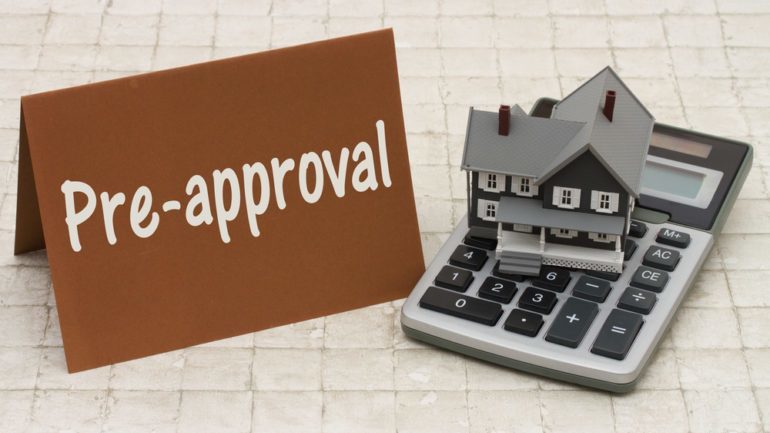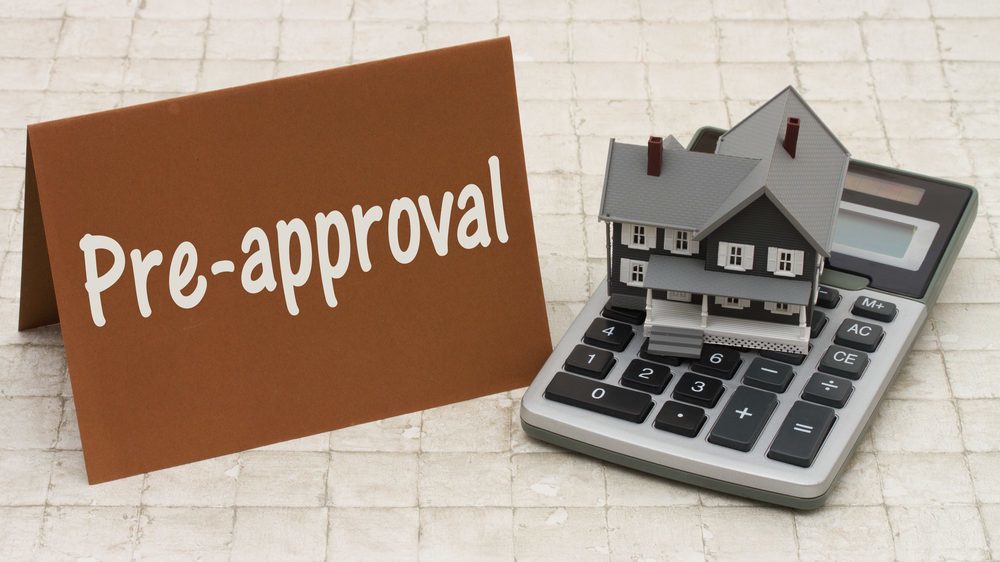Understanding the Preapproval Process: What You Need to Know
Mortgage preapproval is a crucial step in the home buying process, providing potential buyers with an estimate of how much they can borrow from a lender. But what exactly is mortgage preapproval, and how does it differ from prequalification? In this article, we’ll delve into the concept of mortgage preapproval, its benefits, and why it’s essential to get preapproved before starting your home search.
When you get preapproved for a mortgage, a lender reviews your financial information and provides a written commitment stating the amount they are willing to lend you. This preapproval amount is typically valid for a specified period, usually 30 to 60 days. Having a preapproval in hand gives you an advantage in the competitive housing market, as it demonstrates to sellers that you’re a serious buyer with a lender’s backing.
So, how much can you get preapproved for? The answer depends on various factors, including your credit score, income, debt-to-income ratio, and cash reserves. Lenders use these factors to determine your creditworthiness and calculate how much they’re willing to lend you. By understanding these factors and getting preapproved, you can gain a clear picture of your home buying budget and make informed decisions throughout the process.
In contrast to prequalification, which is often an informal estimate of how much you can borrow, preapproval is a more formal process that requires documentation and a lender’s review. While prequalification can provide a rough idea of your borrowing power, preapproval gives you a more accurate estimate and a competitive edge in the market.
Getting preapproved before starting your home search is crucial for several reasons. Firstly, it helps you set a realistic budget and avoid wasting time looking at homes that are outside your price range. Secondly, it demonstrates to sellers that you’re a serious buyer, which can give you an advantage in negotiations. Finally, preapproval can help you identify potential issues with your credit or financial situation, allowing you to address them before they become major obstacles.
In the next section, we’ll explore the key factors that affect your preapproval amount, including credit score, income, debt-to-income ratio, and cash reserves. By understanding these factors, you can take steps to maximize your preapproval amount and achieve your home buying goals.
Factors That Affect Your Preapproval Amount: A Comprehensive Breakdown
When it comes to determining how much you can get preapproved for, several key factors come into play. Understanding these factors can help you maximize your preapproval amount and achieve your home buying goals. In this section, we’ll break down the most significant factors that influence your preapproval amount, including credit score, income, debt-to-income ratio, and cash reserves.
Credit score is a critical factor in determining your preapproval amount. A good credit score can help you qualify for better interest rates and terms, while a poor credit score can limit your borrowing power. For example, a borrower with a credit score of 760 or higher may qualify for a preapproval amount of $300,000, while a borrower with a credit score of 620 or lower may only qualify for a preapproval amount of $200,000.
Income is another essential factor in determining your preapproval amount. Lenders typically use a debt-to-income ratio to determine how much of your income can be allocated towards mortgage payments. For instance, if you earn $5,000 per month and have a debt-to-income ratio of 36%, your lender may only approve a mortgage payment of $1,800 per month. This can impact your preapproval amount, as a higher income can lead to a higher preapproval amount.
Debt-to-income ratio is a critical factor in determining your preapproval amount. Lenders use this ratio to determine how much of your income is already allocated towards debt payments, such as credit cards, car loans, and student loans. For example, if you have a debt-to-income ratio of 40%, your lender may only approve a preapproval amount of $250,000, while a borrower with a debt-to-income ratio of
How to Determine Your Preapproval Amount: A Step-by-Step Guide
Determining how much you can get preapproved for is a crucial step in the home buying process. It helps you understand your budget, narrows down your home search, and gives you an edge when making an offer. To calculate your preapproval amount, follow these steps:
Step 1: Calculate Your Debt-to-Income Ratio
Your debt-to-income (DTI) ratio is the percentage of your monthly gross income that goes towards paying debts, including credit cards, student loans, and car loans. To calculate your DTI ratio, add up your monthly debt payments and divide that number by your monthly gross income. Aim for a DTI ratio of 36% or less to increase your chances of getting preapproved.
Step 2: Gather Financial Documents
To get preapproved, you’ll need to provide financial documents to your lender, including:
- Pay stubs
- Bank statements
- W-2 forms
- Tax returns
- Identification documents (driver’s license, passport, etc.)
Having these documents ready will help you move through the preapproval process more efficiently.
Step 3: Contact a Lender
Reach out to a lender and provide them with your financial documents. They will review your credit report, income, and debt-to-income ratio to determine how much they are willing to lend you. Be sure to ask about their preapproval process, including the required documents, review timeframe, and any fees associated with the preapproval.
Step 4: Review and Understand Your Preapproval Letter
Once you receive your preapproval letter, review it carefully to understand the terms and conditions. The letter should include the approved loan amount, interest rate, and any conditions that must be met before final approval. Make sure you understand how much you can borrow and what your monthly payments will be.
By following these steps, you’ll be able to determine how much you can get preapproved for and start your home buying journey with confidence. Remember to ask your lender about their preapproval process and what you can do to increase your chances of getting approved for the amount you need.
What to Expect from the Preapproval Process: A Lender’s Perspective
When applying for mortgage preapproval, it’s essential to understand the process from a lender’s perspective. This knowledge will help you prepare the necessary documentation, avoid common mistakes, and increase your chances of getting preapproved for the amount you need. So, how much can you get preapproved for? The answer lies in the lender’s evaluation of your creditworthiness and financial situation.
The preapproval process typically begins with a preapproval application, which can be submitted online, by phone, or in-person. The lender will require documentation, including:
- Identification (driver’s license, passport, etc.)
- Income verification (pay stubs, W-2 forms, etc.)
- Asset verification (bank statements, investment accounts, etc.)
- Credit reports
- Employment verification
The lender will review your credit report to assess your credit score, credit history, and debt-to-income ratio. A good credit score can significantly impact how much you can get preapproved for. A higher credit score can lead to better interest rates and more favorable loan terms.
Once the lender has reviewed your application and documentation, they will typically provide a preapproval letter stating the approved loan amount, interest rate, and loan terms. This letter is usually valid for 30 to 60 days, during which time you can use it to make an offer on a home.
The preapproval process can take anywhere from a few days to several weeks, depending on the lender and the complexity of your application. Some lenders offer online preapproval tools that can provide instant preapproval, while others may require a more detailed review process.
To increase your chances of getting preapproved for the amount you need, it’s essential to:
- Check your credit report for errors and dispute any inaccuracies
- Pay off debt to improve your debt-to-income ratio
- Provide complete and accurate documentation
- Shop around for lenders to compare rates and terms
By understanding the preapproval process from a lender’s perspective, you can better navigate the mortgage application process and increase your chances of getting preapproved for the amount you need to purchase your dream home.
Maximizing Your Preapproval Amount: Tips and Strategies
Getting preapproved for a mortgage is a crucial step in the home buying process. However, the preapproval amount you receive may not always be the amount you need to purchase your dream home. Fortunately, there are several tips and strategies that can help you maximize your preapproval amount and increase your chances of getting approved for the loan you need.
One of the most effective ways to maximize your preapproval amount is to pay off debt. High levels of debt can negatively impact your debt-to-income ratio, which is a key factor in determining your preapproval amount. By paying off debt, you can improve your debt-to-income ratio and increase your chances of getting preapproved for a higher amount.
Improving your credit score is another way to maximize your preapproval amount. A good credit score can help you qualify for better interest rates and more favorable loan terms, which can increase the amount you can borrow. You can improve your credit score by making on-time payments, keeping credit utilization low, and monitoring your credit report for errors.
Considering a co-signer is another strategy that can help you maximize your preapproval amount. A co-signer with good credit can help you qualify for a higher loan amount and better interest rates. However, it’s essential to carefully consider the risks and responsibilities of co-signing a loan before making a decision.
In addition to these strategies, there are several other tips that can help you maximize your preapproval amount. These include:
- Gathering financial documents in advance to ensure a smooth application process
- Shopping around for lenders to compare rates and terms
- Considering a longer loan term to reduce monthly payments
- Looking into alternative loan programs, such as FHA or VA loans
By implementing these strategies and tips, you can increase your chances of getting preapproved for the amount you need to purchase your dream home. Remember to always carefully review your loan options and terms before making a decision, and don’t hesitate to seek the advice of a financial professional if needed.
So, how much can you get preapproved for? The answer depends on several factors, including your credit score, income, debt-to-income ratio, and cash reserves. By maximizing your preapproval amount, you can increase your chances of getting approved for the loan you need and achieving your home buying goals.
Common Mistakes to Avoid When Getting Preapproved
Getting preapproved for a mortgage is a crucial step in the home buying process. However, many homebuyers make common mistakes that can lead to delays, denials, or even worse, a lower preapproval amount than expected. To avoid these pitfalls, it’s essential to understand the common mistakes to avoid when getting preapproved.
One of the most significant mistakes homebuyers make is not checking their credit report before applying for preapproval. A credit report error can significantly impact your credit score, which in turn can affect your preapproval amount. It’s essential to review your credit report and dispute any errors before applying for preapproval.
Another common mistake is not providing complete documentation. Lenders require a significant amount of documentation to process your preapproval application, including income verification, asset verification, and identification. Failing to provide complete documentation can lead to delays or even a denial of your application.
Not shopping around for lenders is another mistake homebuyers make. Different lenders offer different rates, terms, and conditions, and not shopping around can lead to missing out on a better deal. It’s essential to compare rates and terms from multiple lenders to find the best option for your situation.
Additionally, homebuyers should avoid making large purchases or taking on new debt before applying for preapproval. This can negatively impact your debt-to-income ratio, which can affect your preapproval amount.
Other common mistakes to avoid include:
- Not disclosing all income sources
- Not providing accurate employment information
- Not considering all loan options
- Not reading and understanding the loan terms and conditions
By avoiding these common mistakes, homebuyers can increase their chances of getting preapproved for the amount they need. Remember, getting preapproved is not a guarantee of approval, but it can give you a better understanding of how much you can afford and what to expect from the home buying process.
So, how much can you get preapproved for? The answer depends on several factors, including your credit score, income, debt-to-income ratio, and cash reserves. By avoiding common mistakes and providing accurate and complete documentation, you can increase your chances of getting preapproved for the amount you need.
How to Shop Around for the Best Preapproval Offers
Shopping around for preapproval offers is a crucial step in the home buying process. With so many lenders offering different rates, terms, and conditions, it’s essential to compare offers to find the best one for your situation. In this article, we’ll provide tips on how to shop around for the best preapproval offers and increase your chances of getting approved for the amount you need.
One of the most important things to consider when shopping around for preapproval offers is the interest rate. Even a small difference in interest rates can save you thousands of dollars over the life of the loan. Look for lenders that offer competitive interest rates and consider working with a mortgage broker who can help you compare rates from multiple lenders.
In addition to interest rates, it’s also essential to consider the terms and conditions of the loan. Look for lenders that offer flexible repayment terms, low fees, and no prepayment penalties. Some lenders may also offer additional features, such as mortgage insurance or home equity lines of credit.
Another factor to consider when shopping around for preapproval offers is the lender’s reputation and customer service. Look for lenders that have a good reputation and offer excellent customer service. You can read reviews online, ask for referrals from friends or family, or check with the Better Business Bureau to find a reputable lender.
To compare preapproval offers, you’ll need to gather information from multiple lenders. Here are some tips to help you compare offers:
- Get preapproval offers from at least three lenders
- Compare interest rates, terms, and conditions
- Consider working with a mortgage broker to help you compare offers
- Read reviews and check the lender’s reputation
- Ask about additional features, such as mortgage insurance or home equity lines of credit
By shopping around for preapproval offers, you can increase your chances of getting approved for the amount you need and find a loan that meets your financial goals. Remember to always carefully review the terms and conditions of the loan and ask questions before making a decision.
So, how much can you get preapproved for? The answer depends on several factors, including your credit score, income, debt-to-income ratio, and cash reserves. By shopping around for preapproval offers and comparing rates, terms, and conditions, you can increase your chances of getting approved for the amount you need and achieving your home buying goals.
Next Steps After Preapproval: Navigating the Home Buying Process
After receiving preapproval for a mortgage, the next steps in the home buying process can be both exciting and overwhelming. With a clear understanding of your budget and a preapproval letter in hand, you’re ready to start searching for your dream home. In this article, we’ll provide guidance on how to navigate the home buying process with confidence.
Step 1: Find a Real Estate Agent
A reputable real estate agent can be a valuable resource in the home buying process. They can help you find homes that fit your budget and meet your needs, and provide guidance on the local market. When selecting a real estate agent, look for someone who is knowledgeable, responsive, and has experience working with buyers in your area.
Step 2: Search for Homes
With your preapproval letter in hand, you’re ready to start searching for homes. Consider factors such as location, size, and amenities when evaluating potential homes. Don’t be afraid to ask questions or request additional information about a property. Your real estate agent can help you navigate the search process and provide valuable insights about the local market.
Step 3: Make an Offer
When you find a home you love, it’s time to make an offer. Your real estate agent can help you determine a fair price for the property and guide you through the offer process. Be prepared to negotiate, and don’t be discouraged if your initial offer is rejected. Remember to stay calm and patient, and be open to compromise.
Additional Tips for Navigating the Home Buying Process:
- Stay organized and keep track of paperwork and deadlines
- Don’t hesitate to ask questions or seek guidance from your real estate agent or lender
- Be prepared for unexpected expenses or delays
- Keep your credit score and financial situation stable during the home buying process
By following these steps and tips, you can navigate the home buying process with confidence and find your dream home. Remember to stay focused on your goals and don’t be afraid to ask for help along the way.
So, how much can you get preapproved for? The answer depends on several factors, including your credit score, income, debt-to-income ratio, and cash reserves. By understanding the preapproval process and navigating the home buying process with confidence, you can increase your chances of getting approved for the amount you need and achieving your home buying goals.






